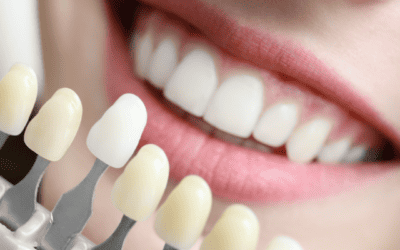Toothpaste has been around for a long time. The Egyptians were thought to have used it as far back as 5,000 BC (before the use of toothbrushes). However, modern toothpaste in the form that we know it has only been around since the 1950s. But what is in toothpaste, why do we need it, and how do you choose??
There are many toothpastes on the market, with many claims. Do you want whitening, extra fresh, tartar control, cavity control? Or is this all the same thing?
First of all, figure out what you want your toothpaste to do. Do you want all round protection? Do you have gum disease? Are you always getting fillings and need something extra to help prevent cavities? Are you wanting to whiten that smile?

How to choose?
The best way to decide what you need is an understanding of what is in the toothpaste so you are not confused by all the different marketing and packaging. Quite often you will find the same ingredients but in different packaging or worded a different way. For example, carboxymethylcellulose sodium, sodium gum, carbomer and cellulose are all just thickeners to give your toothpaste that creamy texture. Some toothpastes are more like gels, therefore they will have different ingredients. Saccharin sodium and sodium saccharin are just flavourings. You may like minty fresh, spearmint, fresh-mint, extra fresh…
Compare different products, packaging and varieties of the same toothpaste, and they may in fact be the same product, just with different marketing and different price tags!
There are however some important ingredients to check for in your toothpaste:
Fluoride

Make sure to use a fluoride toothpaste for cavity control.
#1 thing to look for in a toothpaste – 1,450ppm fluoride
Fluoride was first added to toothpaste in the 1890s but wasn’t mainstream until the 1950s. The majority of toothpastes will contain fluoride, and for good reason. The fluoride in toothpaste can come in different forms: Sodium fluoride, sodium monofluorophosphate or stannous fluoride. There is debate whether any of these is better than the other, but the bottom line is that fluoride reduces tooth decay. A clinical trial done between 1945 and 1985 showed that fluoridated toothpastes provided a reduction in decay of up to 32%.
There has been a lot of bad press regarding fluoride and concerns over its safety. Fluorine is a naturally occurring element, estimated to be the 13th most abundant in the earth’s crust. It is widely dispersed in nature and you can find it in water (fresh, salt and rainwater), tea, potatoes and grapes (even wine!).
In toothpastes, fluoride is only effective at concentrations above 1,000ppm (parts per million, how the amount of fluoride is measured, which is equal to 0.1% fluoride ion). Most adult toothpastes will have concentrations of 1,450ppm which is what you want to look out for.
Children’s toothpastes will have less – you can use a lower strength, or less of an adult toothpaste – chat to your dentist about this and what is appropriate for your child.
That is really all you need from your toothpaste if you are looking for an all-rounder and not to address any specific problems.
If you have a really high decay rate and are always getting fillings at the dentist – speak to your dentist about a high fluoride toothpastes. These are available from the pharmacist (over the counter only) or some dentists may sell them, as we do. These are also great for people who really need to avoid cavities (e.g. patients on certain medications or undergoing certain treatments) or for those with dry mouth. Neutrafluor by Colgate contains 5,000ppm of fluoride so is much higher in fluoride than off the shelf toothpastes. Just remember to keep this away from young children as this concentration is much too high for them.
If you have tooth sensitivity

What if you have sensitive teeth? Well first of all, get your dentist to check it out. Tooth sensitivity – sharp pains to hot, cold and/or sweet – can be the first sign there is a problem like a cavity, tooth wear, erosion, or recession of your gums. If you get the all-clear from the dentist and are told you have tooth sensitivity (also called tooth hypersensitivity or dentine hypersensitivity and caused by exposed dentine or exposed root surfaces) then you should try a toothpaste for sensitive teeth.
Tooth sensitivity can be treated by toothpastes in one of two ways:
1. make the nerve of the tooth less reactive to the stimulus (hot, cold, sweet)
Or
2. Block the transmission to the nerve
Potassium is used to make the nerve less reactive, i.e. desensitise the nerve. You’ll find this in toothpastes in the form of potassium chloride, potassium nitrate or potassium citrate.
To block the transmission to the nerve, you need something to block the little tubules in the tooth – i.e. Arginine or Novamin.
NovaMin (sodium calcium phosphosilicate) was originally developed as a bone regenerative material and is highly biocompatible.
Which is more effective? Everyone isdifferent and what might work for you may not for your friend. Try one and see how you get on, but remember that sensitive toothpastes work over time, especially if you are building up a layer of protection, so you’ve got to use this one for the long-haul.
Tooth whitening

Tooth whitening from your dentist is the only safe
and effective way to whiten your teeth.
If you are looking to brighten that smile, the only way to effectively do it is to have them professionally whitened by your dentist.
So why do so many toothpastes claim to whiten your teeth? Most so-called whitening toothpastes actually contain abrasives which work by scratching surface stains. If your teeth are particularly susceptible to wear, or you have a lot of gum recession, these may be too abrasive for you and could over time cause more damage.
Abrasives in toothpaste include: Silica, hydrated silica, silicone dioxide, bicarbonate, sodium bicarbonate.
The only chemical that whitens teeth is hydrogen peroxide (may be provided by your dentist in the form of carbamide peroxide, which breaks down to hydrogen peroxide). There are toothpastes on the market which contain this, and therefore are the only true whitening toothpastes. However, it’s not clear on what strength is used and therefore how effective it is. To give you an idea, 6% hydrogen peroxide is what is most commonly used in home tooth whitening kits provided by your dentist.
Other beneficial ingredients:
- Zinc: Zinc is an essential trace element. In the mouth, it is present naturally in plaque, saliva and enamel. Zinc is put into toothpastes to control plaque, reduce malodour and inhibit calculus (tartar) formation
- Xylitol: the use of xylitol alongside fluoride can have and increase in the prevention of tooth decay.
- Eugenol: antiseptic and anti-inflammatory. You may find this in toothpastes that target gum disease.
Others:
- Sodium lauryl sulphate (SLS): this makes toothpaste foam. Some people can have a sensitivity to this. If you are getting sores in your mouth and your dentist has ruled out other causes (always get these checked out) they may advise and SLS free toothpaste (Sensodyne repair & protect is SLS free).
- Colour: titanium dioxide gives toothpaste is whiteness.
- Sodium hydroxide – balances pH by neutralising acid (don’t confuse with hydrogen peroxide, the bleaching agent).
- Glycerol/glycerine/glycerin – stops the toothpaste drying out.
The best advice when choosing your toothpaste – ask your dentist what you should be targeting, have a look at the ingredients and the cost. Beware of fancy marketing and packaging and check for optimum fluoride levels.


